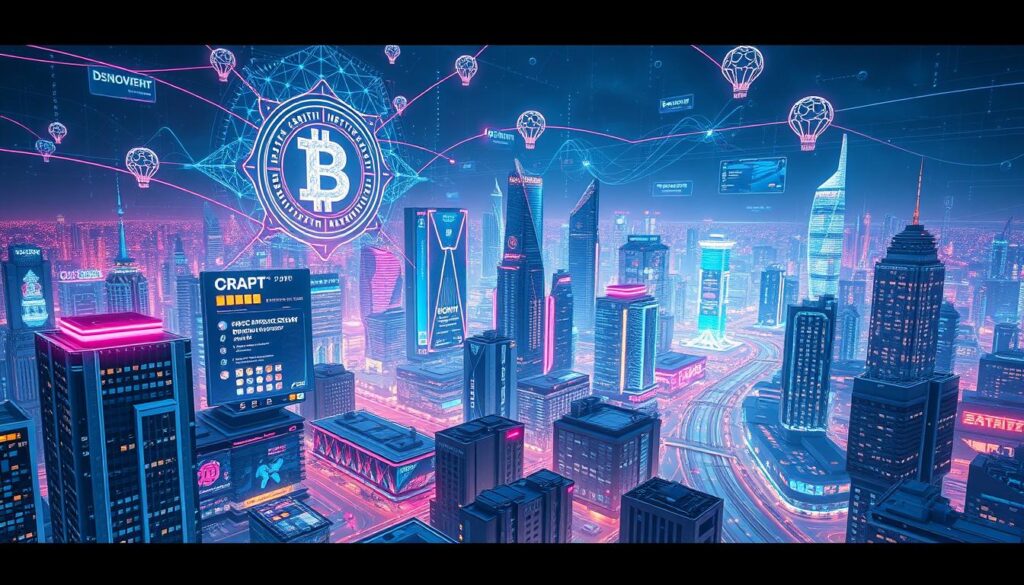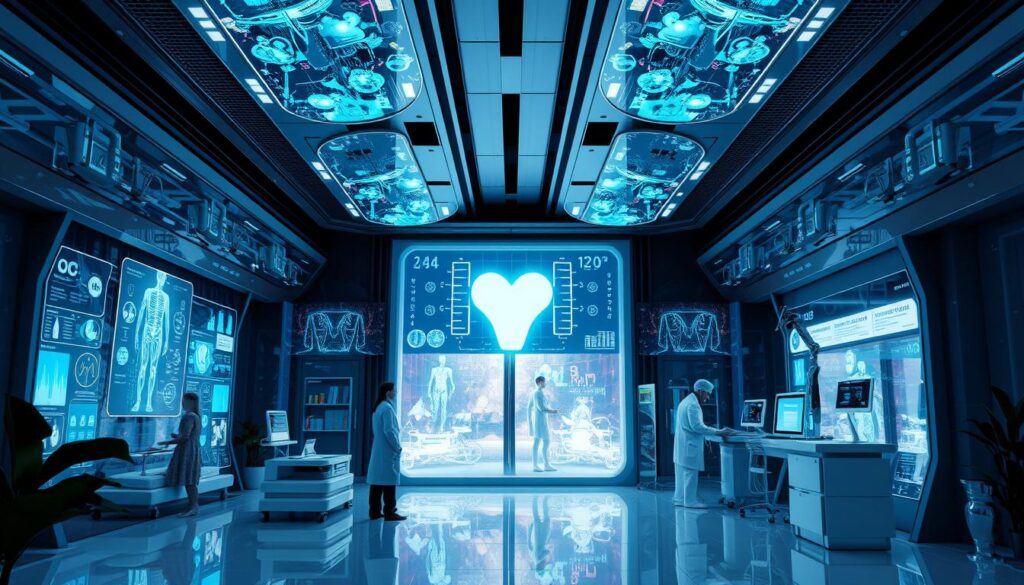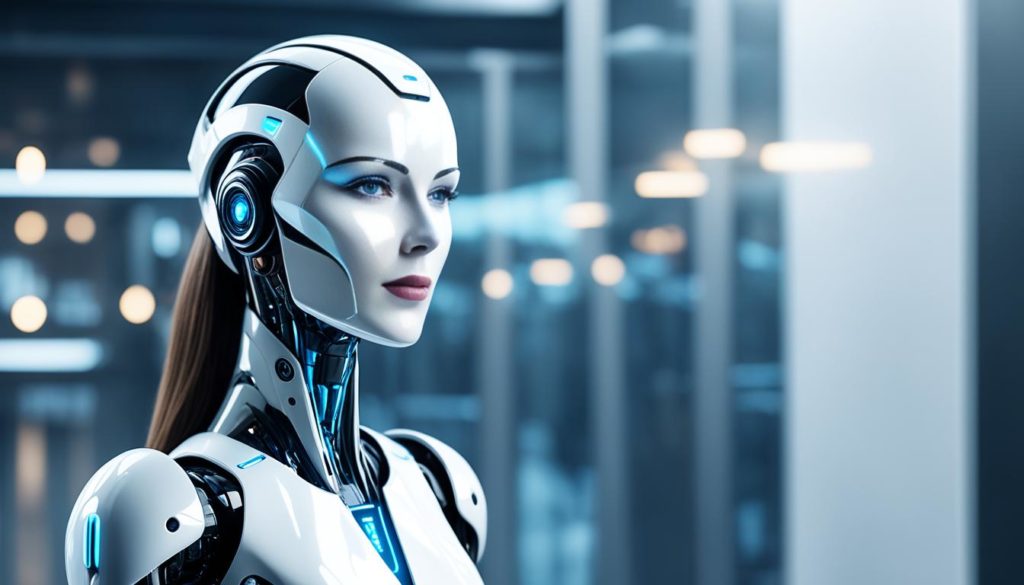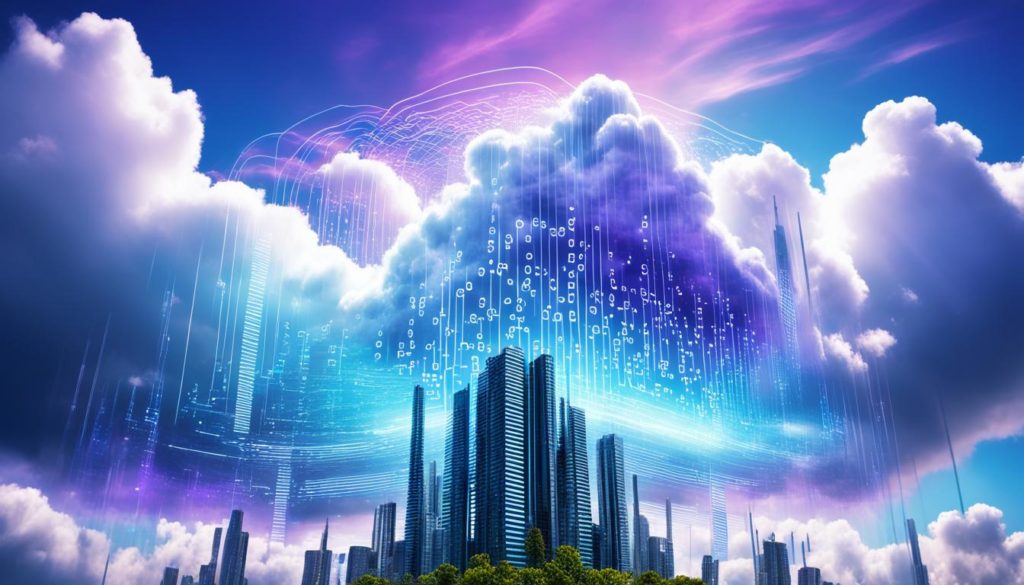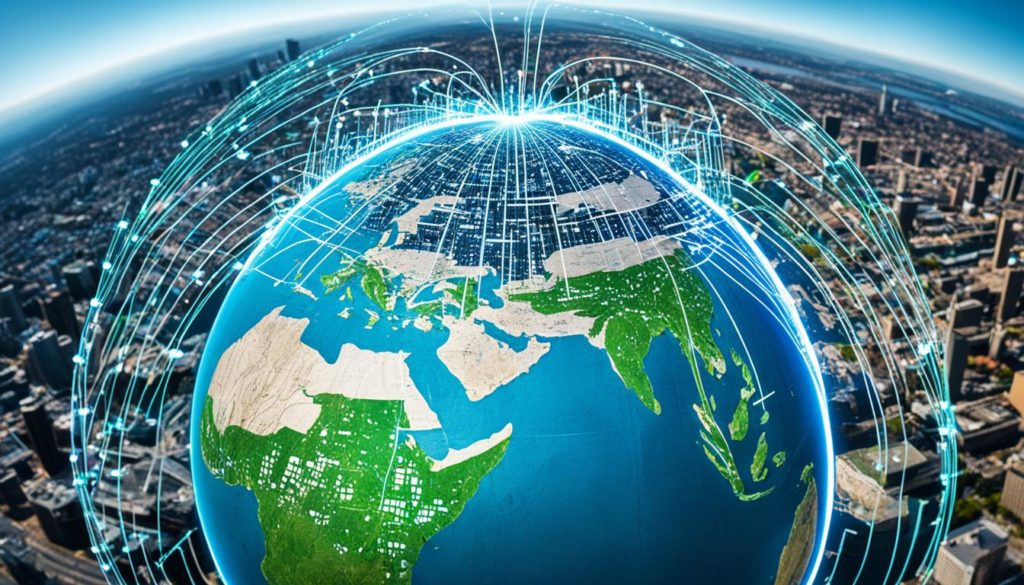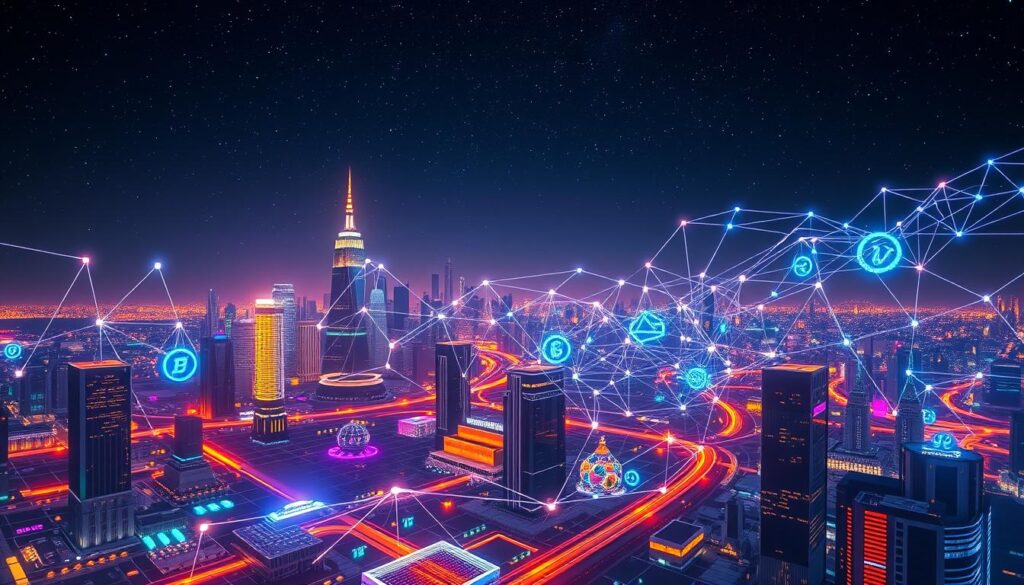
Did you know that by 2025, 23% of major websites and apps will use Web 3.0? This shows a big change with Web 3.0, the future of the internet. It’s different from Web 1.0 and Web 2.0 because it’s more about users and smart interactions.
Web 3.0, also known as the Semantic Web, uses new tech like AI, blockchain, and IoT. It aims to make the internet more connected and fun. Imagine a web where data moves easily, thanks to smart contracts and decentralized tech.
As we explore Web 3.0, we’ll see how it changes our online world. It promises better data safety and more personal experiences. The decentralized web is a big step forward for the internet.
Key Takeaways
- Web 3.0 is the next stage of the internet, focusing on decentralization and smart interactions.
- Technologies like blockchain, AI, and IoT are key to Web 3.0’s benefits.
- Web 3.0 aims to offer more personalized and secure online experiences in many areas.
- Challenges like rules and security issues need to be solved as we move to Web 3.0.
- Decentralized storage and smart contracts are crucial for Web 3.0’s reliability and trust.
The Evolution of the Web: From Web 1.0 to Web 3.0
The journey from Web 1.0 to Web 3.0 has been a big change. We start with Web 1.0, known as the “read-only” web. This time, from 1990 to 2000, was when users could only read, not interact.
Web 1.0 was special because of its static pages and simple design. It used HTML 3.2 for frames and tables. HTML forms were sent by email, and content came from the server’s filesystem, not databases.
Then came Web 2.0: The Social Web in 2000. This era changed with interactive content and user-generated content. It introduced APIs and social media, making the web more dynamic.
Facebook, YouTube, and Twitter were key players in this era. They made it easy for people to create and share content. This was a big shift from the static web of Web 1.0.
Web 2.5, from 2010 to 2020, focused on mobile technology. It brought apps and new solutions like Progressive Web Apps (PWA) and Accelerated Mobile Pages (AMP). Companies like Amazon and Google played big roles, offering cloud services for better device connectivity.
Now, we reach Web 3.0: The Semantic Web, starting in 2010. This era uses Artificial Intelligence and Machine Learning to understand user data. It connects through the Internet of Things (IoT), making data exchanges secure and decentralized.
| Characteristic | Web 1.0 | Web 2.0 | Web 3.0 |
|---|---|---|---|
| Time Period | 1990-2000 | 2000-present | 2010-present |
| Main Features | Static content, HTML forms, GIF graphics | Interactive content, UGC, social media | Semantic understanding, AI & ML, IoT |
| User Interaction | Read-only | Read and write | Intelligent interaction |
| Technology Focus | HTML pages, frames, tables | APIs, dynamic web apps, mobile computing | Decentralized web, blockchain, AI |
| Privacy | Minimal | Moderate | Enhanced privacy |
Key Features and Technologies Powering Web 3.0
Web 3.0 marks a big change in digital tech. It relies on decentralized apps, unlike Web 2.0’s central model. Web 3.0 uses blockchain tech, making things more open and giving users more power.
It also fights against big tech’s data hoarding. Web 3.0 lets people talk directly with each other and keeps data safe with special codes.
Blockchain technology is key to Web 3.0. It makes DeFi platforms possible, offering financial services without middlemen. It also supports NFTs, which prove digital items are unique.
Gavin Wood, Ethereum’s co-founder, brought Web 3.0 ideas to make the internet more open.
Artificial Intelligence (AI) and Machine Learning play big roles in Web 3.0. AI makes the web more personal, and NLP lets machines talk to us. This makes the web feel more natural.
AI is also key for the metaverse, a 3D virtual world that needs decentralized tech.
The Semantic Web aims to make data easy for computers to understand. This helps data work well together, making the internet more open and free.
Web 3.0 also brings in the Internet of Things (IoT). This lets devices talk to each other easily. It makes everything work together better, making data management more efficient.
| Core Features | Description |
|---|---|
| Decentralization | Web 3.0 promotes a decentralized web structure via blockchain and peer-to-peer networks. |
| Data-Driven Decisions | Utilizes user data to support decisions, enhancing personalization and relevance. |
| Semantic Interoperability | Facilitates the understanding of data across varying contexts through structured formats. |
| Secure Authentication | Uses cryptographic protocols for user verification and data protection. |
| Mobility | Offers a seamless, tailored web experience across diverse devices and platforms. |
Web 3.0, or the Semantic Web, keeps the good parts of the web but makes them smarter. It uses smart analytics to make the web better for everyone.
Applications and Industries Transforming with Web 3.0
Web 3.0 is changing many industries by using new tech like blockchain. It makes things more private and gives users more control. In finance, it’s making big waves with DeFi platforms.
These platforms let people do financial things without banks or other middlemen. This makes things cheaper and more accessible worldwide. Blockchain keeps transactions safe and honest, which helps everyone, especially those who are not well-served by banks.
In Healthcare, Web 3.0 is making a big difference. It’s changing how we handle electronic health records. Blockchain makes sure these records are safe and can’t be changed.
Also, AR and VR are changing healthcare by making it better for patients and doctors. They help with planning treatments and training doctors.
In education, Web 3.0 is helping students and teachers. It gives them access to better learning tools and resources. Smart contracts make things like tracking attendance easier and safer.
This makes school work more efficient and less stressful for teachers. It helps everyone focus on learning more.
Supply chains are also getting a boost from Web 3.0. Blockchain makes it easy to track where things come from. Smart contracts help make things run smoother and faster.
Web 3.0 is making things more efficient and less expensive. It’s helping companies and people work better together. With tools like Calibraint, we can find new ways to solve old problems.
Web 3.0: Challenges and Limitations
Web 3.0 has the power to change the internet, but it faces big challenges. One major issue is the complexity of its technologies, like blockchain. This complexity can slow down and limit the use of decentralized apps, which are key to Web 3.0.
Another big problem is the lack of clear rules. With no single authority, questions about who makes decisions, keeps data safe, and handles security arise. Ensuring everyone has fair access and preventing misuse is also a big concern.
Lastly, the different standards and platforms create a risk of a broken system. This could make it hard for users to move smoothly between services. To overcome these hurdles, we need to keep working together, innovating, and solving these problems.
FAQ
What is Web 3.0?
Web 3.0, also known as the Semantic Web, is the next step in the internet’s evolution. It uses advanced tech like artificial intelligence, blockchain, and the Internet of Things. This creates a smarter and more connected user experience.
How does Web 3.0 differ from Web 2.0?
Web 2.0, or the Social Web, focused on user-generated content and social media. Web 3.0 aims for a more personalized and proactive experience. It uses tech that understands and adapts to individual needs.
What role does artificial intelligence (AI) play in Web 3.0?
AI is key in Web 3.0 for analyzing data, making smart suggestions, and automating tasks. It helps create a seamless and personalized user experience.
What is the significance of blockchain technology in Web 3.0?
Blockchain technology is vital in Web 3.0 for its decentralization and security. It ensures transparent and secure transactions. This enables decentralized apps and smart contracts that work without middlemen.
How does the Internet of Things (IoT) contribute to Web 3.0?
IoT connects devices to the internet, creating a connected world. In Web 3.0, IoT data helps make apps more aware of their surroundings. This improves efficiency and user experience.
What industries are being transformed by Web 3.0?
Web 3.0 is changing many industries. Finance is seeing changes through decentralized finance (DeFi). Healthcare, education, and supply chain management are also being transformed.
What are the major challenges and limitations of Web 3.0?
Web 3.0 faces challenges like complexity and scalability with blockchain. There are also regulatory and ethical concerns. Additionally, technological fragmentation can hinder interoperability and user experience.
How is Web 3.0 expected to impact user experience?
Web 3.0 promises a more personalized, intelligent, and connected user experience. Users will see dynamic content tailored to their interests. They’ll also enjoy better data security and innovative apps that fit seamlessly into their lives.
Future App Studios is an award-winning software development & outsourcing company. Our team of experts is ready to craft the solution your company needs.


